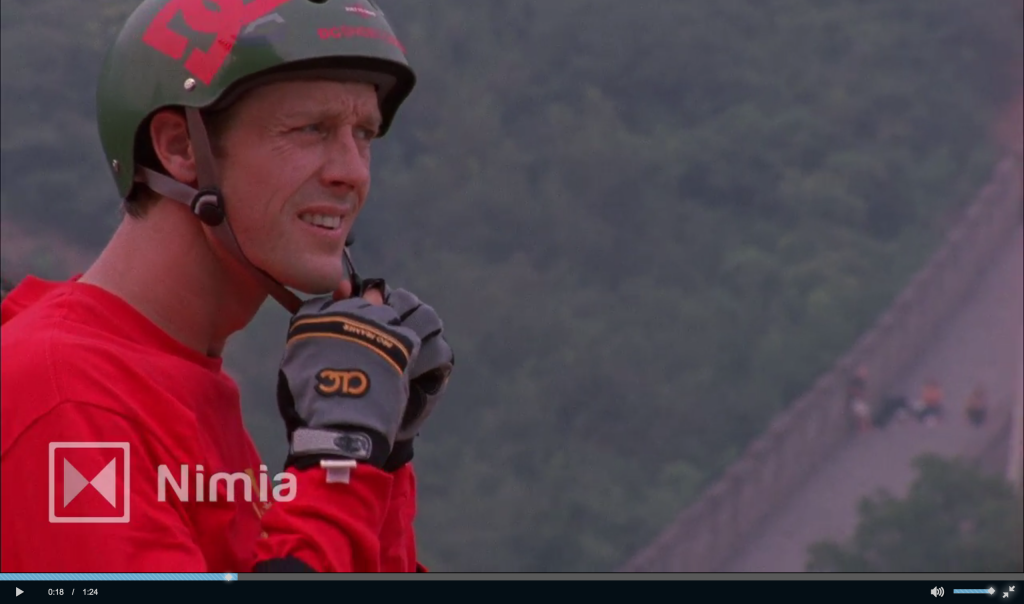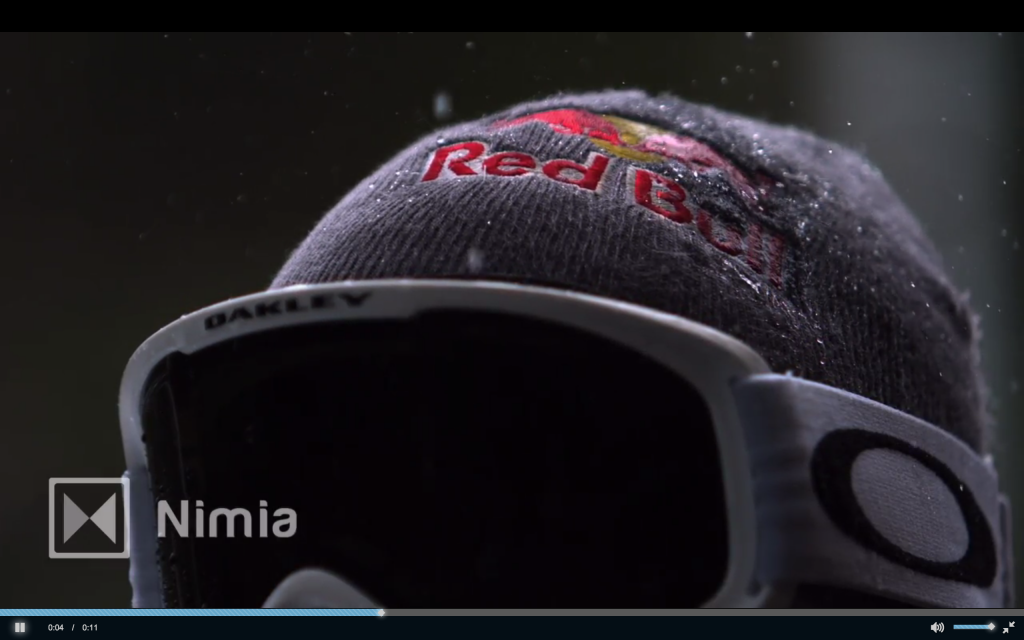Companies will spend $44 billion dollars on branded content this year. Companies, and particularly the marketing departments involved, should be aware of the legal issues that branded content can create. The following paragraphs help video producers and companies understand important legal issues surrounding branded content.
©2015 DC Shoes, Example of Branded Content
Why Does it Matter?
If a company faces a lawsuit related to branded video content, the company’s legal liabilities may differ depending on whether the branded content is considered a documentary or a commercial. The difference in legal liabilities can be in the millions of dollars. In addition, if a branded content video is considered a documentary (“editorial piece”) the producer will have greater freedom in creating the story he wants to tell. The red tape around model releases, property releases, logos, and trademarks decreases, and he can use fair-use arguments if using copyrighted material. On the other hand, if branded content is classified as a commercial ad, a producer’s legal liability goes way up, eg., he has little fair-use argument of copyrighted material and any individual appearing in the video may have a case to bring a lawsuit against the branded content owner.
Is Your Branded Video Content Considered a Documentary or a Commercial?
Whether a branded video is defined as editorial or commercial is a matter of objective and subjective attributes of the video. The classification needs to be done on a case-by-case basis. Most branded video content is 3 to 15 minutes in length and tells a narrative story. On the other hand, a commercial ad is 30 seconds in length about a particular product or company. That being said, branded content always runs the risk of converting into a commercial and it will depend, among other things, how the sponsor is presented in the branded content piece. Below is a hypothetical story to help explain.
RedBull Media and DigiLights – Hypothetical
Mike Johnson is a 34 year-old bachelor and owner of DigiLights Production. Mike has eight fulltime employees and recently signed a contract with RedBull Media House to create a short 7-minute video on surfing. He’ll be following 3 professional surfers and their friends to Mexico to capture the culture and appeal of the sport.
Mike is wondering if he needs model releases signed for any of the people that will appear in the video? To answer the question we need to determine whether the 7-minute video is considered a documentary or a commercial?
Legally speaking, the video has elements of both: it chronicles the lives of three surfers but it also has RedBull’s logo in the opening scene and strategic product placement throughout the video.
If the 7-minute video is a documentary, Mike does not need model releases because Mike is protected under the 1st Amendment’s freedom of speech and expression. This freedom extends to films and documentaries, and is generally referred by the term “editorial” content. The term editorial covers entertainment, news, and educational video works, but not “commercial” works.
If the 7-minute video is a commercial for RedBull, Mike needs model releases signed for all people appearing in the video, unless their appearance is incidental. In this hypothetical there are strong arguments favoring a classification of a documentary, but lets look at previous case law.
©2015 PoorBoyz Productions, Example of Branded Content
Legal Cases:
Below are real life legal cases to help determine whether a branded video is a documentary or a commercial.
- In 1993, surfer Mickey Dora sued for violation of his right of publicity in the video “The Legends of Malibu”, Dora v. Frontline Video, Inc., Cal. App. 4th 536, 18 Cal. Rptr. 2d 790(Ct. App. 1993) The video chronicled the early days of surfing, showing contemporaneous footage of famous surfers, including Dora but the producers did not get a signed model release from Dora. The court determined the video was a documentary, that no model release was needed, and Dora lost the case.
- In 2001, surfers sued Abercrombie & Fitch under right of publicity and misappropriation, Downing v. Abercrombie & Fitch, 265 F.3d 994 –Court of Appeals, 9th Circuit 2001. Abercrombie produced a themed surfing catalog. In one section it had the title ‘Surf Nekkid’ where a 700-word article described the history of Old Man’s Beach at San Onofre, California. Following the article, the catalogue exhibited photos of the surfers taken in 1965 Makaha International Surf Championship in Hawaii. Two pages immediately after, the catalog featured t-shirts labeled ‘Final Heat Tees’ which were identical to those worn by the surfers in the prior photos. The court of appeals held that Abercrombie had used the plaintiffs’ names and photos “essentially as window dressing to advance the catalog’s surf-theme”. The court reasoned that the illustrative use of plaintiffs’ photos did not constitute an editorial use and that model releases should have been obtained.
- In 2008, John Facenda sued N.F.L Films under right of publicity and misappropriation, Facenda v. N.F.L. Films, Inc542 F. 3d 1007 –Ct. Of Appeals, 3d Circuit 2008. The issue regarded a ‘documercial’ broadcasted prior to the release of the new Madden NFL video game. The ‘documercial’ consisted of a 22 minute long documentary featuring interviews with NFL players and the game’s producers and included several sequences comparing the video game’s virtual environment with the actual NFL environment. The court of appeals held that (i) the production was commercial in nature, i.e, an advertisement rather than a documentary; (ii) NFL had violated Facenda’s right of publicity – the voice’s commercial value was undisputed, it was used for a commercial purpose (advertising) and the release did not cover endorsements; and (iii) Facenda’s state right of publicity was not preempted by the NFL’s federal copyright.
- In Hofheinz v. A&E Television Networks, 146 F. Supp. 2d 442 – Dist. Court, SD New York 2001 defendant created a biography of actor Peter Graves and used approximately 20 seconds from the promotional trailer for the film “It Conquered the World” to describe the actor’s early career roles. In finding fair use, the court emphasized the transformative nature of the documentary in analyzing the purpose and character of the use: “Appearing in “It Conquered The World” was a fact of Graves’ life. The 20 seconds of footage shown of that appearance in defendants’ biography was not shown to recreate the creative expression reposing in plaintiff’s film, it was for the transformative purpose of enabling the viewer to understand the actor’s modest beginnings in the film business.”
So where does this leave the hypothetical of Mike and the RedBull project?
VERDICT: DOCUMENTARY
Mike’s RedBull project is likely defined as a documentary but it would depend on additional factors, including but not limited to how much RedBull’s logo is seen and used in the video. To be safe, it is always good practice to get model releases signed by all persons appearing in a non-incidental manner in the video. For more legal information on model releases, right of publicity, and misappropriation, check out the following detailed article written by Nimia Attorney Pablo Balana: Model Releases and Right of Publicity in California
Eric J. Harrison is General Counsel at Nimia.com, a digital rights management agency. By accessing and reading this blog, you acknowledge and understand that no attorney-client relationship has been formed and you further acknowledge and understand that this blog is not intended to constitute legal advice. Legal advice and counsel requires a fact-specific analysis of your particular issues, and you should thus obtain legal advice directly and individually from an attorney licensed to practice in your jurisdiction, if appropriate.




